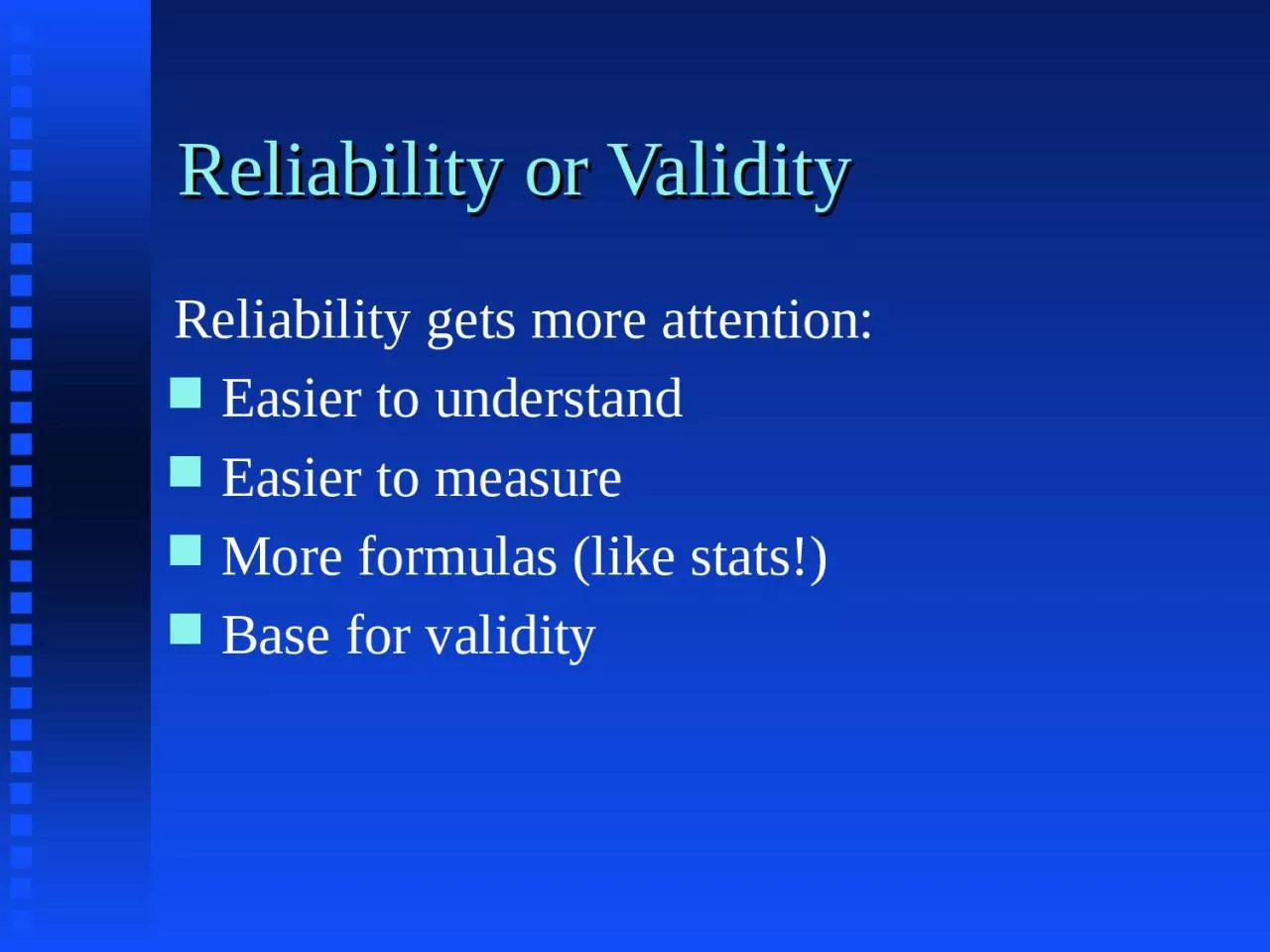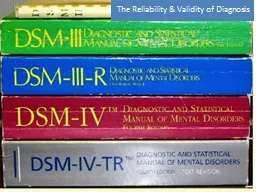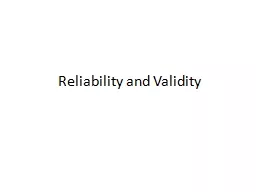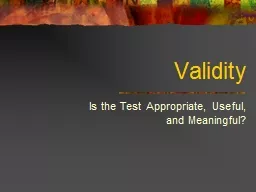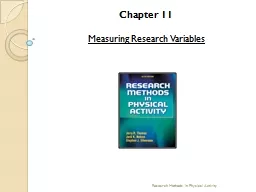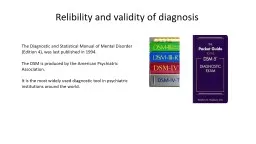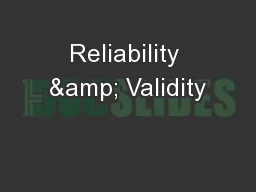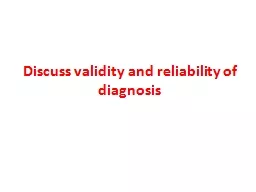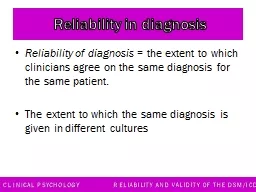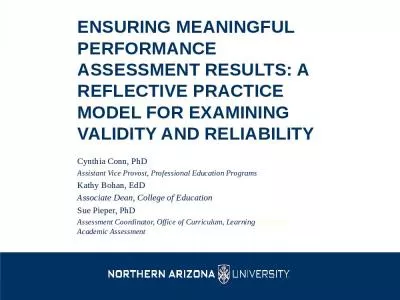PPT-Reliability or Validity Reliability gets more attention:
Author : fanny | Published Date : 2023-11-03
Easier to understand Easier to measure More formulas like stats Base for validity Need for validity Does test measure what it claims Can test be used to make decisions
Presentation Embed Code
Download Presentation
Download Presentation The PPT/PDF document "Reliability or Validity Reliability gets..." is the property of its rightful owner. Permission is granted to download and print the materials on this website for personal, non-commercial use only, and to display it on your personal computer provided you do not modify the materials and that you retain all copyright notices contained in the materials. By downloading content from our website, you accept the terms of this agreement.
Reliability or Validity Reliability gets more attention:: Transcript
Download Rules Of Document
"Reliability or Validity Reliability gets more attention:"The content belongs to its owner. You may download and print it for personal use, without modification, and keep all copyright notices. By downloading, you agree to these terms.
Related Documents

